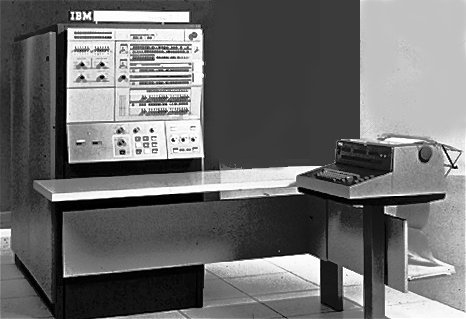IBM 360 Computer
Today, a new computer. The University of Houston's College of Engineering presents this series about the machines that make our civilization run, and the people whose ingenuity created them.
1961: I'd just begun teaching at Washington State University. I'd done three engineering degrees and never even seen a computer. Only one student around me had, and he had to master machine language to use it.
Washington State was ahead of the game. They already had a computing center. When I arrived, the main frame was an old IBM 709. It still used vacuum tubes, and integrated motherboards were no more than a gleam in a few visionary eyes.
But transistors were now reaching the American scene like a tidal wave. Many versions of Sony's new transistor radio were now on the market, and a few months after I arrived, the University replaced their 709 with IBM's new transistor version, the 7090.
I was slow to learn Fortran programming, but that computing center was a huge agent of change. Its card-fed machine was far slower than even a modest PC. Keyboard communication with computers was hardly known. Dealing with any computer meant subjecting yourself to pain; yet it still drew us like a distant magnet.
Meanwhile, IBM engineers were locked in a death struggle over the next generation of computers. The rate of computer evolution was roughly the same then as it is now. But we're accustomed to that evolution. We expect it. In the 1960s, we all thought we'd fallen into the maelstrom. IBM's obvious course was to finish its next model, the 8000. But then, a frightening gamble surfaced in the company. Writer James Strothman tells about it.
A battle raged between incremental improvement and putting all the eggs in one basket. In the end, the all-eggs strategy won out. IBM set out to create a wholly new machine with qualities unlike any previous one -- a strategy that would make every other IBM computer obsolete. They even gave it a discontinuous number. They called it the 360. It was the first business computer with the huge advantage of being compatible with both smaller and larger computers.
The IBM 360 finally reached the Palouse wheat fields of Eastern Washington. It cost the university two million dollars in 1966. I began using it and the world opened up. Right away, I solved a differential equation numerically and found myself staring at a Butterfly Effect. It'd be decades before that term entered our vocabulary. These new machines led us into a brave new world.
The 360 went to market against a new GE computer that could do embryonic multi-tasking. Both MIT and Bell Labs bought GE's com-puter. The 360 missed out on that feature, but it captured the market anyway. It drove GE out of the business.
I look back on all that turbulence and think, "What exciting times!" Then I realize: I could've gone into engineering in any age and the story would've been the same. It wasn't the times at all. Rather, that's what science and technology are all about. Go into those areas, and you'll always find yourself in the center of complex and far-reaching alterations of the human condition.
I'm John Lienhard, at the University of Houston, where we're interested in the way inventive minds work.
(Theme music)
Strothman, J. E., The Ancient History of System/360. American Inventions: A Chronicle of Achievements that Changed the World. New York: Barnes & Noble Books, 1995, pp. 152-158.
For more on that equation solution leading to a Butterfly Effect, see: Lienhard, J. H., and Newton, T. A., Effect of Viscosity upon Liquid Velocity in Axi-Symmetrical Sheets, Zeit. f. Ang. Math. u. Phys (ZAMP), Vol. 17, No. 2, 1966, pp. 348-353. Or look at Episode 847.
For more in the IBM System 360 see: IBM System 360 Model 67 c.1969
Listener Fabian Gonzalez had an interesting addition to this episode. He wrote, "You mention a GE computer that was on the leading edge of interactive computing. Actually, IBM forced the sale of GE Information Systems, GEIS, to Honeywell Information Systems. That series of system eventually morphed into Honeywell's DPS systems. I started in the computer business here in Houston in 1979 and my first job was with Honeywell Information Systems as a 'field engineer.' I was assigned to what was regarded as the 'GE' side of the house."
